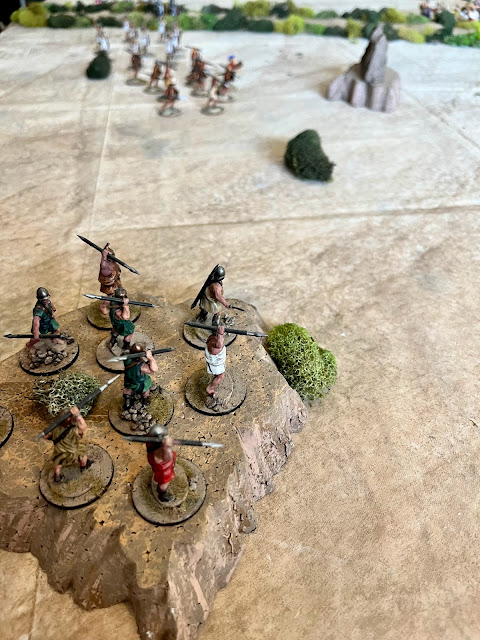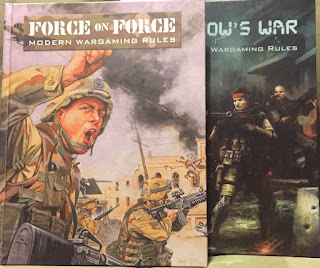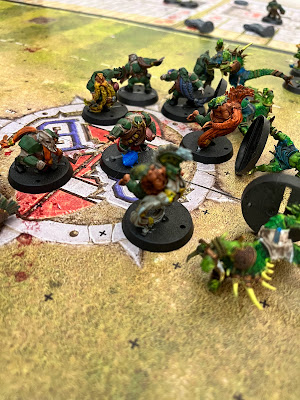You, my loyal reader, know that I like to dabble in all sorts of game design. My primary focus has been in wargames, but that is not the only type of games I have worked on. I have built card games, board games, and other simple games for my own amusement as well. One area I have commented on previously and actively play is Role-playing Games (RPGs).
I actually started my RPG journey before my wargame journey. I learned how to play "Red Box" D&D from a friend's dad; a Lutheran pastor. I picked up all the boxed sets from a little bookstore in the local strip mall, the only strip mall within a day's bike ride! From there, I managed to scrap and scrape together the basic AD&D books, the Buck Rogers RPG, and the TSR Marvel Super Heroes game. As a teen, I played a lot of West End Games D6 Star Wars and Shadowrun. Many of the books have been lost to time, and I still lament the loss of my Masters edition boxed set. Shortly there after, an ad in Dragon magazine sucked me into the world of Warhammer and I have managed to juggle my two RPG and Wargame hobbies every since.
Now that I am older, having regular RPG nights and/or Wargame nights is much easier. I was able to get into a local RPG session much easier than I was able to get into the wargaming community! The wargaming scene had a number of starts and stops. Meanwhile, I have had a long running RPG group with a dedicated weekly game night, that was only interrupted by COVID, but has since re-grouped after vaccines became widely available.
The re-engagement with this group has rekindled my interest in RPGs. Thanks to this group I have been able to play and run a few more modern games such as Dune, Lasers and Feelings, Monster of the Week, Legend of the 5 Rings, Those Dark Places, and more. The group is primarily a Dungeons and Dragons 5e group, but we are not averse to spreading our wings a bit! Thankfully, we have several people who are capable of being game masters as well as players too!
However, this is going to be my first actual RPG review. It will follow the normal format my reviews take:
Meh and Other Uncertainties
The game uses "Fictional Positioning" so toss those grid boards aside for this game. There are some broad categories for distances, just so characters do not teleport across a block; but distance and combat is much more abstract than a game like Dungeons and Dragons, Lancer, or Mech Warrior.
Scenes and Turns have a relatively loose structure. Generally characters lead the action. However, what they want to do, dictates who does them. For example, a guy who wants to talk gets to take actions before shooting, or fighting. This means you always have a chance to bargain before you fight, if you plan your actions right.
The game has a relatively simple experience system that is serviceable for short campaigns. However, do not look for long, sprawling campaigns and rules to go with them in this book. Things are much more "cinematic" than that.
Like all games now, there is a short blurb about "safety tools" as some of the topics that can come up in the Hard City are seedy or worse. There is also a short section about how to run the game, that is old hat for most of us. This does include some basic profiles, and quick "reaction table" that you can use for NPCs in a pinch.
The most useful part of the GM discussion is the "Web of Clues" and the example adventure that goes with it. This is really helpful for GMs as it lays out a strong method for structuring an investigation game. Instead of rooms in a dungeon, it links scenes and clues together in a way where players can easily move from pre-planned point to pre-planned point in a natural way.
Final Thoughts
This is a nice, straight forward rules-light game. The focus is on narrative action and less on the mechanics of doing stuff. It leans into the episodic nature of many of the sources and this game would be best for a one-shot or a short campaign. If you are familiar with more narrative based games, and that is your jam and you like the genre; then this game will be a good buy. This is often the style of game I am attracted too, as I want to explore a few themes and characters quickly, and then move onto new challenges. That is not for everyone.
If you prefer a more structured and crunch based experience, than steer clear. I would not expect this game to endure a long campaign very well either. Things would just start to get redundant or stale. This game is more Those Dark Places or Monster of the Week, and much less Mutants and Masterminds or Pathfinder. You probably know the types of games you like, and now know whether this is a game for you or not.
Or purchase all out games at the Blood and Spectacles Publishing Wargames Vault Page!
































